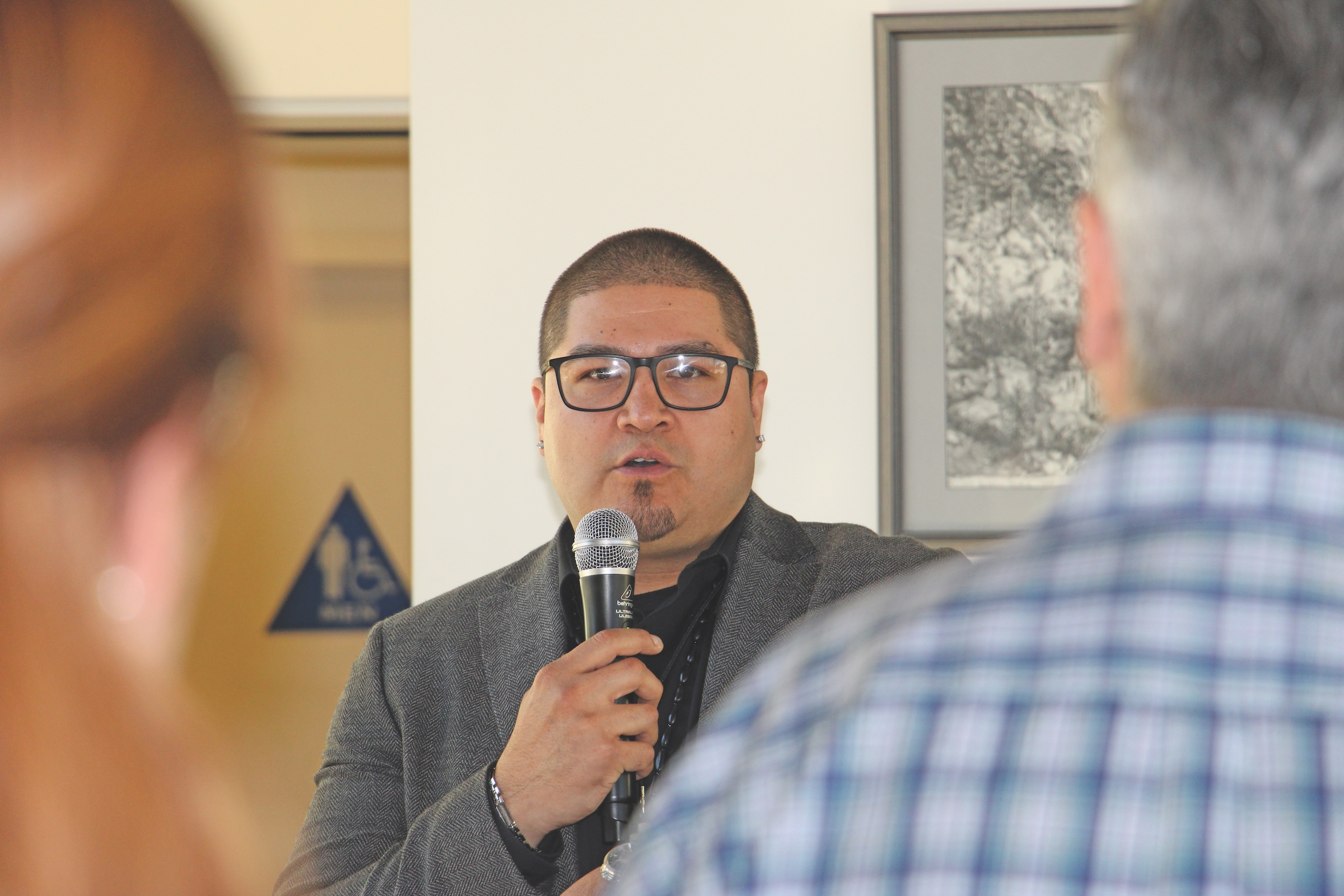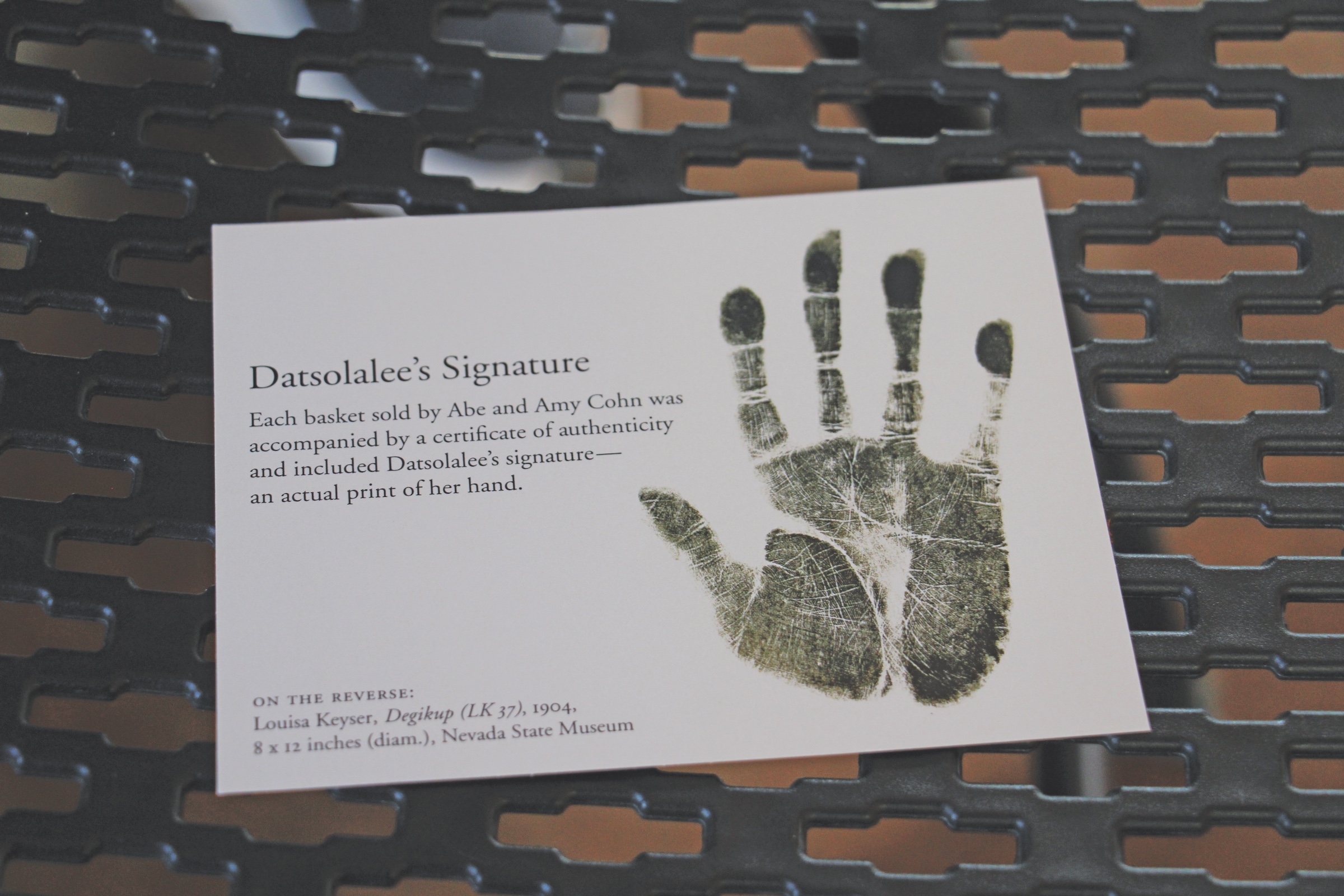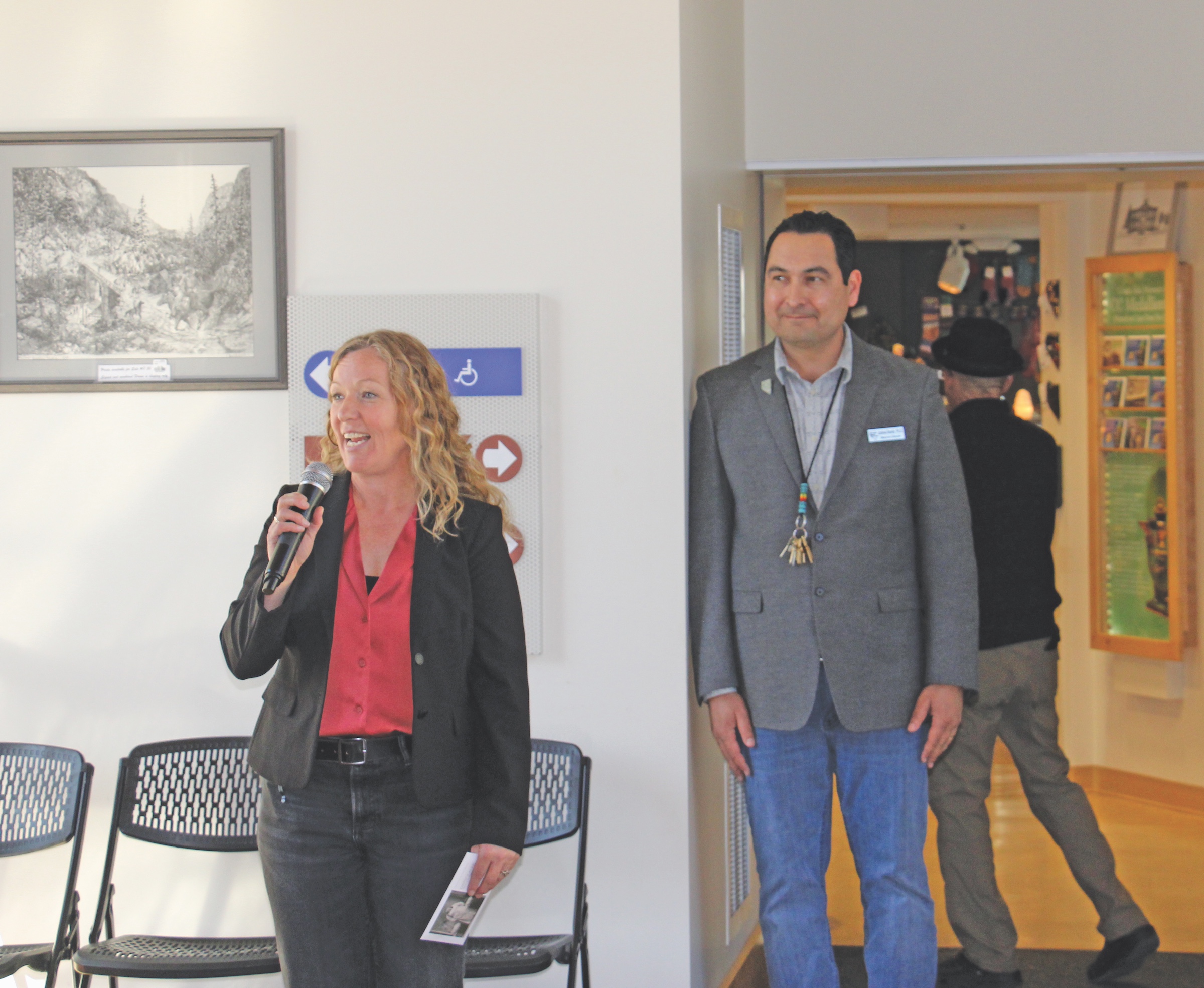Washoe Tribe Vice Chairman Patrick Burtt looking at Coin Press No. 1 in the Nevada State Museum on March 20.
The unveiling of the Datsolalee medallion at the Nevada State Museum on March 20 was personal for Josh Bonde. He remembered how in the early 1980s, he would come to the museum in Carson City and see depictions of indigenous people.
“Coming here as a kid, there used to be the dioramas of like naked brown people poking animals with sticks,” he said. “Primitives, you know.”
Bonde grew up in Fallon, a citizen of the Te-Moak Tribe of Western Shoshone. Decades later, after a distinguished career in natural history and paleontological research, he became the director of the Nevada State Museum, overseeing exhibits now designed to accurately represent indigenous cultures and their contributions to the state.
“I think the importance of native cultures to Nevada culture, to American culture, especially in the West, is becoming more and more realized,” he said. “I think the importance is the culture is not gone. It’s still contributing to this day. We’re still around. We’re still contributing … In terms of representation, we’re not gone.”
Datsolalee, also known as Louisa Keyser, was a Washoe basket maker at the turn of the 20th century. Her artistry garnered fame. The museum is now using Coin Press No. 1 to mint the medallions depicting her. The press is a functioning relic from the 19th century, when the U.S. Mint had a branch in Carson City facilitating the Comstock boom and America’s westward expansion.
“Personally, it’s huge,” Bonde said of the new medallion. “It’s kind of a full circle where we’re honoring an indigenous woman, a very important, highly-skilled indigenous woman, on a machine that is kind of traditionally associated with colonialism. It’s kind of this weird circuitous way we’re using this colonial, industrial machine to honor such a skilled woman who did so much for the culture of her tribe and for Nevada culture in general, too.”

Scott Neuffer/Nevada Appeal
Washoe Tribe Vice Chairman Patrick Burtt speaking to a crowd in the Nevada State Museum concourse on March 20 when the museum unveiled a new Datsolalee medallion minted on Coin Press No. 1.
The Datsolalee medallion is the second entry in the museum’s Women’s History Series. Bonde pointed to the medallion and the museum’s current Native American gallery — the Under One Sky exhibit that opened in 2002 — as steps in the right direction.
“Even before my time here, the Under One Sky was a huge step forward in representation,” he said.
Anna Camp, curator and the museum’s tribal liaison, worked with the Washoe Tribe of Nevada and California on the new medallions. A portion of each medallion sale will go to the Washoe Tribe’s cultural program in perpetuity.
“We’re the Nevada State Museum, so we’re supposed to be representing all the cultures,” she said.
The museum also is working on a new display of Datsolalee baskets tentatively planned for the fall, the largest public collection of her baskets, Camp said. However, the museum is coordinating with the tribe on the project and doesn’t want to rush anything.
“We house their ancestors’ things, archeological and historic … and we want them to tell their story, not tell it from my perspective,” Camp said. “I’m not native, so I can’t tell their story for them. But I can be the liaison between the tribe and the museum.”
Camp said the museum won’t open the new gallery, “If they (Washoe) don’t feel they’re being well-represented.”
“These things take time, and we want to make sure we’re doing it right,” she said. “I want everyone in Nevada to feel like this is their space.”
Washoe Tribe of Nevada and California Vice Chairman Patrick Burtt told the Appeal the museum has done a good job establishing a better working relationship with the tribe.
“For the tribe, one thing that we’ve been really critical of, especially in terms of this modern kind of intervention in museum studies … a lot of the different displays that weren’t only happening at this particular museum but even more generally were misrepresentations of Native peoples,” he said. “So those misrepresentations, then, extended into a lot of the different stereotypes that worked against Native peoples.
“So, for Washoe people, a lot of those stereotypes were also associated with the Minden siren that we actually just pushed Nevada state legislation to end: Senate Bill 391. I actually co-introduced that with Sen. Dallas Harris out of Las Vegas.”
That bill reiterates state law prohibiting a town from sounding a siren historically associated with telling “persons of a particular race, ethnicity, ancestry, national origin or color to leave the county or a city, town or township within the county by a certain time.”

Scott Neuffer/Nevada Appeal
Educational materials accompanying Datsolalee medallions at the Nevada State Museum on March 20.
“This bill authorizes the Attorney General to bring a civil action to collect a monetary penalty from a county, city or unincorporated town for each violation,” the bill reads.
Besides being vice chairman, Burtt is chairman of the Dresslerville Community Council as well as the tribal historic preservation officer for the tribe. He also is in the Ph.D. anthropology program at University of Nevada, Reno.
Burtt said Camp was functioning from an ethical space when it came to working on the medallion.
“So, knowing that this is Indigenous land, this is Washoe territory, is also important for us — being recognized in our homelands,” he said. “For this particular minting, I think it’s really important that a Washoe woman is recognized for her individual contributions to our broader kind of social dynamics.”
Burtt said the new medallion reflects how the social atmosphere is changing.
“It’s recognizing that indigenous people are also contributors,” he said. “More than just stakeholders in things, we’re partners.”
Datsolalee is now regarded as the greatest basket weaver in history, Burtt said, pointing to Washoe culture as a strong foundation for her legacy.
“Coming from a Washoe kind of cultural upbringing and then moving into a non-Washoe space of, you know, colonialism and capitalism, she was able to navigate those spaces because of the strength and resiliency she’d known — and kind of been enveloped in — because of Washoe culture.”
Like Bonde, Burtt commented on the coin press and how it’s being used outside of the original intentions for it.
“It’s still a symbol of colonialism and colonization and dispossession — genocide even, in a lot of ways, capitalism. A lot of those things are still current systems working against indigenous peoples, especially Washoe people,” he said. “So, although this is a step in the right direction it’s only one baby step. There is a lot of work that still needs to happen. There’s a lot of different things that I think that we can look to with this being at least a foundation for us working together in the future.”

Scott Neuffer/Nevada Appeal
Nevada State Museum Tribal Liaison Anna Camp, left, and Museum Director Josh Bonde at an unveiling of the new Datsolalee medallion on March 20 at the museum in Carson City.
Comments
Use the comment form below to begin a discussion about this content.
Sign in to comment